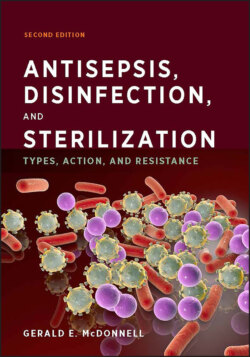Читать книгу Antisepsis, Disinfection, and Sterilization - Gerald E. McDonnell - Страница 34
1.4.2.5 MICROSCOPY AND OTHER TECHNIQUES
ОглавлениеOther specific methods are used to evaluate the efficacies of biocidal processes and products. These are generally used due to restrictions on the cultivation of various microorganisms under laboratory conditions. Microscopy or other detection (biochemical and genetic) methods for the presence of microbial contaminants have been used; however, these methods can identify the presence of an organism but may not necessarily detect its actual viability. A specific example of the use of microscopy is in the determination of the viability of protozoan (oo)cysts or helminth eggs. In the case of protozoa, the viability of cysts can be determined in vitro by suspension in a specific medium under controlled conditions (including temperature) to cause the cysts to excyst and release their vegetative forms (see section 1.3.3.4); this can be monitored microscopically and is considered a reasonable indication of cyst viability. Cell culture methods (using mammalian cells) have also been developed to determine cyst viability and are also widely used to culture viruses and some bacteria. In many of these cases, in vitro methods are not sufficiently developed to determine microbial viability, and the use of in vivo (animal) models is required. An example of this is the case of prions (see section 1.3.6), which are proposed to be infectious proteins; although the biochemical detection of the protein can be used as an initial indicator of inactivation and cell culture assays are currently under development, in vivo infectivity models are highly recommended to confirm activity against these unusual agents.
